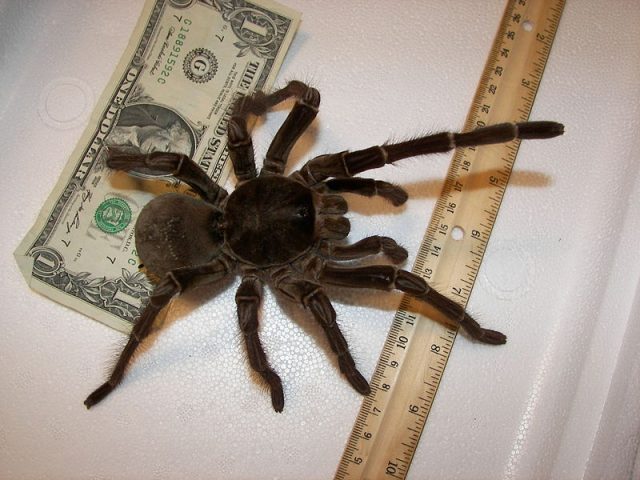Type the name of the breed you're looking for below
[wpdreams_ajaxsearchlite] Don't see the breed your're looking for? Click here and let us know!
Goliath Bird-eating Tarantula
| Place of Origin and Range | This species is found in the northeastern quadrant of South America, in Venezuala, Guyana, Suriname, French Guyana, and northeast Brazil. |
| Description | Like all tarantulas, these have fangs large enough to break the skin of a human (1.9–3.8 cm or 0.75–1.50 in). They carry venom in their fangs and have been known to bite when threatened, but the venom is relatively harmless and its effects are comparable to those of a wasp's sting. Tarantulas generally bite humans only in self-defense, and these bites do not always result in envenomation (known as a "dry bite"). |
| Adult Size | Can grow up to 12 in (30cm) |
| Accommodation | These spiders live in a woodland type habitat. Be sure to have enough substrate to allow burrowing. A mild temperature with a basking spot at 21- 25'C (69 - 77'F) |
| Lifespan | Can live up to 3 years |
| Feeding / Diet | Despite its name, it is rare for the Goliath Bird-eater to actually prey on birds; in the wild, its diet consists primarily of earthworms and toads. However, because of its size and opportunistic predatory behavior, it is not uncommon for this species to kill and consume a variety of insects and small terrestrial vertebrates. In the wild it has been observed feeding on rodents, frogs and toads, lizards, and snakes. |
| Other Considerations | These spiders can have a leg span of up to 28 cm (11 in) and can weigh over 170 g (6.0 oz). Birdeaters are one of the few tarantula species that lack tibial spurs, located on the first pair of legs of most adult males. |



